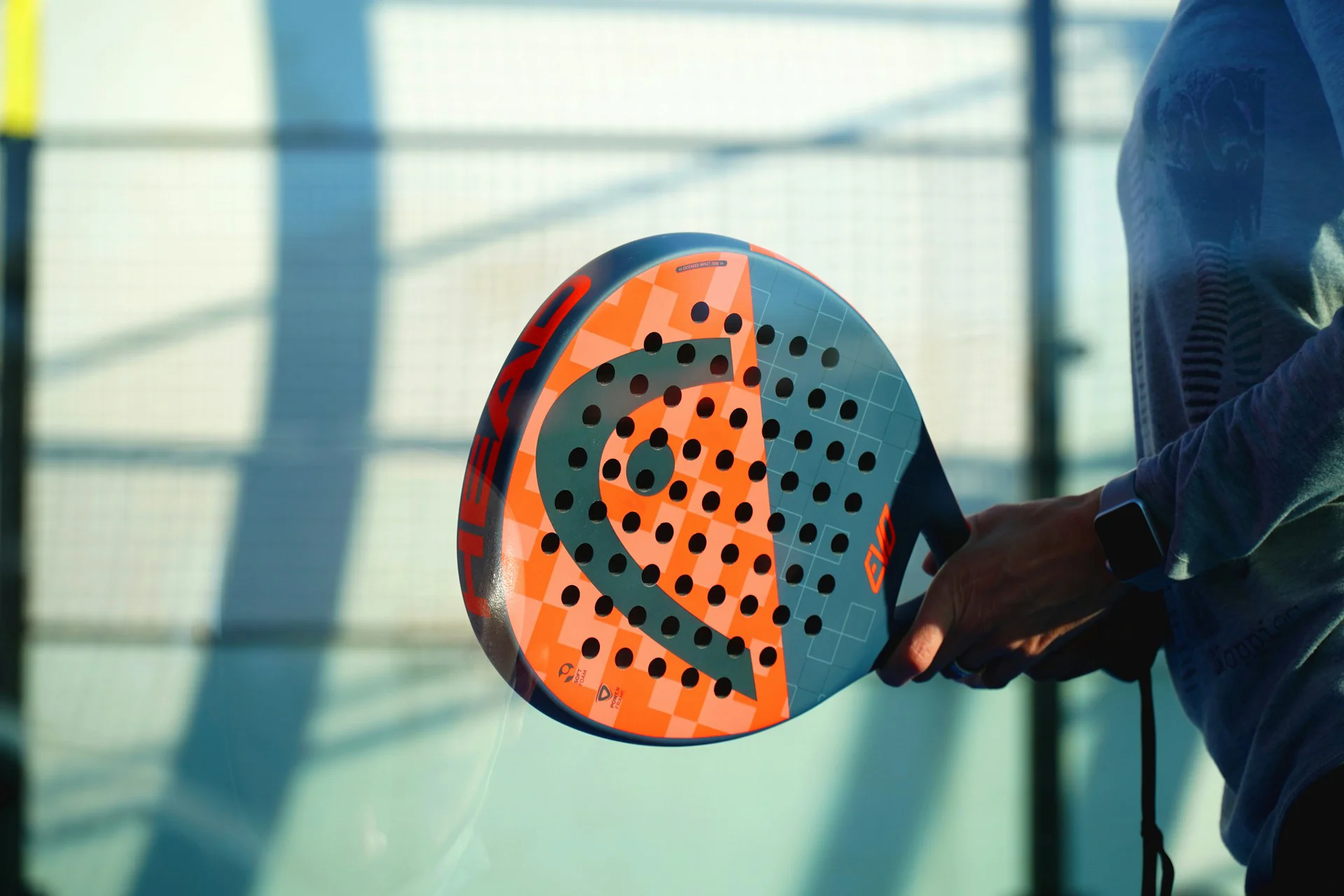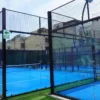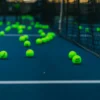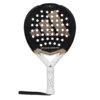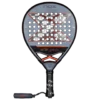Check out our latest additions to the websites - if you're looking for rackets, balls, bags or clothing - Gear up for victory!
Shop NowTable of Contents
When it comes to improvement in padel, most players emphasize the best equipment, padel moves, and more. But one thing that they miss out on is padel positioning. It’s just where you stand, how you move, and how you react. Yes, all these can actually make a difference in your gameplay.
So, in this article, you will get deep into padel court positioning, know some rules and tactics, and get detailed forehand/backhand net and defensive positioning. Also, we will share some secret drills you can actually do and level up your game.
Why Does Padel Positioning Make All the Difference?
Where you stand in the padel court actually makes a big difference in your gameplay. Sounds crazy, right? When it comes to leveling up your game, you will often focus on making your strokes faster. But that’s not enough. The competition is super high, and to beat the heat of competition, you need to focus on your position. Perfect strokes won’t always help you. But your padel positioning turns things positive for you.
But how does a good padel position change your game?
Control the speed and rhythm: If you are at a proper spot, you can quickly respond, shut off angles, and overpower your opponents, pushing them to play defensively.
Reduce response time: Let’s say you are standing in the back wall or corners; here, poor placement means you are scrambling and striking off-balance.
Save energy: Clever padel positioning won’t push you much. It will save you from running across the court unnecessarily. You walk less and move with purpose.
Increase your attacking choices if you position well and get a good amount of time to respond. You can juggle with net play, angled volleys, smashes, bandejas, and more.
So padel court positioning is not a gimmick. It’s all about being tactical, physical, and psychological. When you consider placement to be half of the game, everything else falls into place.
Core Principles of Padel Court Positioning You Should Know
Defensive Positioning: Holding the Back Court
Are you under extreme pressure? There’s a simple way to deal with it. Just stand behind the service line, midway between the side glass and the back wall. Not too forward, as you may get caught up by deep lobs, and not too backward, as you will leave too much space for volleys and make wall shots harder to judge.
Offensive Positioning: Owning the Net
More than 70% to 80% of points are scored at the net. That is why a key padel positioning strategy is to go forward as quickly as possible.
When on the net, do the following:
- Take a step back from it. Don’t hug the net, or you will get lobbed quickly.
- Stay on your toes and be 100% prepared to move sideways anytime.
- Use the posts as reference points to determine width and angle.
Avoid “No Man’s Land”
One of the worst padel placement faults is staying between the service line and the net. You are susceptible to this position. Here you are too far away to safely volley and too close to respond to deep strikes. Either commit to defending or to attacking. But remember, don’t get trapped in the middle.
Padel Positioning Rules You Can’t Skip
If you want to master the art of getting the best padel position, make sure to follow these rules:
- Move first, hit second: Don’t just blindly swing while moving. First, get your spot, and then swing the racket.
- Recover after every shot: Don’t admire your shot or get exhausted hitting every ball. Quickly get back to the base position and recharge.
- Stay level with your partner: Make sure to stay level with your partner, either both at the back or both at the net.
- Use anticipation: Act as per the situation in the game. Read the opponent’s racket face to position early and get an upper hand.
Padel Court Positioning Tactics
Curious to know some crazy strategies that will take your game to the next level? Here are the padel court positioning tactics that pros use:
- When defending, the purpose is not to hit winners. It’s to be consistent and wait for your opportunity. Proper padel position makes life simpler.
- Stand 1-2 steps behind the service line.
- If the ball is cross-court, go closer to the sidewall. If you are in the center, don’t move.
- Take little, fast steps instead of large lunges.
- Walls are your buddy, but only if you arrange them correctly. Here’s how to do that:
For rapid balls, take a step forward and meet the ball early.
For slower, looping balls, take a step back, allow the ball to rebound, and swing smoothly.
For corner balls, either spin the ball or back away to create space.
Padel Court Positioning: Forehand vs. Backhand
Forehand side positioning
- Typically, for right-handed players, it is to the right.
- Covers lobs down the line and smashes.
- Strong placement is required for bandeja and víbora shots.
Backhand side placement
- Typically, for right-handed players, it is on the left.
- Controls the center and collects more cross-court balls.
- Requires accurate posture for defensive corner rebounds.
Typically, the forehand placement is important for finishing points, while the backhand play is super important when it comes to directing the game.
Advanced Padel Positioning Tactics
If you have mastered the basics of padel positioning, now it’s time to go one step up. When you go to an advanced level, padel is not just about attacking or defending; it’s more about adapting to the game, understanding the moves, and acting according to the conditions.
So, here are some advanced padel tips for better positioning in the padel field:
Reading Opponents
Consider padel as a chess match with a racket. Yes, that’s how you should keep your mind in shape. You need to analyze the paddle of your competitor and quickly understand his or her next move. If you spot the next moves of your opponent, making the correct padel positioning can be super easy.
Let’s help you understand how to trace your opponent.
If your opponent is late on the ball:
Watch for opponents who get caught reaching or stretching. A late swing usually means a weaker shot. This may lead to a defensive lob with less control. So, take this chance and make an aggressive move to dominate the game.
Key tip: Your eyes are more important on the padel court than your feet. So, make sure you train your eyes to quickly grasp your opponent’s moves. Keep your eyes on the ball as well as on your opponent’s preparation. Positioning isn’t just about where you move; it’s about moving before the ball dictates it.
An open racket face, pointed upwards, is a clear indication of a lob. The ball will ascend higher and slower, allowing you to withdraw. Rookies often make the mistake of not reacting quickly enough. As soon as you see the open face, start stepping back so that you enter a balanced and prepared zone.
If they drop their shoulder:
Shoulder drop is a smash indicator. So, to counter this situation, instead of standing firm at the net, prepare for the rebound. Depending on your level and conditions, this might include withdrawing to the service line or bracing for a glass rebound.
Adapting to Conditions
Padel is an outdoor game. So, obviously, the weather is a key factor influencing the game. That’s why smart padel players adjust their padel court positioning tactics to match conditions. How to do that?
Hot Weather
Hot temperature causes balls to bounce higher and quicker. At the rear, this means standing slightly further back to give yourself more time to recover. It causes lobs to go further at the net; thus, opponents will employ them more frequently. Because the ball bounces higher off the glass, your placement must include faster recovery following smashes.
Cold Weather
Cold and damp weather can make the ball heavier, diminishing bounce. In defense, you may go closer to the glass since the ball will not rebound as far. Lobs travel less deep at the net, allowing you to maintain a closer position.
Key tip: Before every match, spend five minutes warming up, and during this time, pay close attention to bounce and flight. Use that time to calibrate your positioning. Take this as a serious suggestion, as small adjustments can turn out to make a huge difference once the match begins.
Common Padel Positioning Mistakes and Solutions
Bad padel positioning habits are very common, as most players don’t even know that there is something like padel positioning. That’s why we are covering the most common padel positioning mistakes the players make so that you can stay a million miles away from these errors:
Standing Flat-Footed Instead of on Your Toes
Padel demands constant adjustment. However, many players tend to stand still and react super late. Being flat-footed makes you slower to move sideways or backwards.
How to fix it? It’s super simple. Stay on the balls of your feet with a slight forward lean. Maybe you can take a sprinting stance. This will help you to quickly adjust your position as and when required.
Staying Too Close to the Back Glass in Defense
Let’s make it clear: standing on heels, almost touching the back wall, won’t give you more time to react. This is a common misconception of the players. But that’s definitely not true. In reality, this will take things south and trap you. With this tactic, you get zero space to adjust to awkward bounces.
How to fix it? Again, it’s simple. Just stand a step or two forward from the glass. This gives you enough space to react and make a move.
Overcommitting to the Line, Leaving the Middle Exposed
It’s easy to overprotect the side wall, especially if you are worried about getting passed down the line. However, in padel, you gain good points through the center. Overprotecting the line gives your opponents an easier, higher-percentage shot.
How to Fix It? Position yourself to reach both the middle and the line. Collaborate with your partner: if the ball is cross-court, the near-side player can close the line while the other covers the center. Don’t defend the line alone.
Training Drills for Better Padel Positioning
Practice makes you perfect. So, just reading about the best padel positioning tips and tricks won’t work. You need to implement them and practice a bit before the actual match.
So, there are some training drills that will increase your awareness and help you get a better position on the court:
Shadow placement with your teammate
Move laterally across the court without hitting a ball. Practice synchronized shifts at the net and defensive recoveries at the back.
Wall Reaction Drills
Request that a coach or partner feed balls of various speeds and spins. To effectively manage rebounds, focus on walking forward or back.
Lob recovery drill
Have your partner throw continuous lobs while you practice retreating from the net, resetting behind the service line, and preparing for the next shot.
Cone Drills
Place cones at the basic places and travel fast between them. This encourages the proper spacing and recuperation practices.
Point Simulation
During practice rallies, announce your position. Verbal signals promote awareness and collaboration.
Summary
If you take one thing away from this guide, remember that padel positioning is more important than technique. If you have a slightly weaker technique, yet you are at the perfect spot, you can win the game. But the reverse won’t be true typically. The best thing is that you don’t have to hit the hardest shots; all you need is to be in the right location, with your partner, at the right moment, and even low-power shots will also make a big impact.
Want to learn more about how to improve? Check out our blog for in-depth padel equipment evaluations, racket comparisons, and training instructions tailored for players looking to level up their game.
Read more about:

